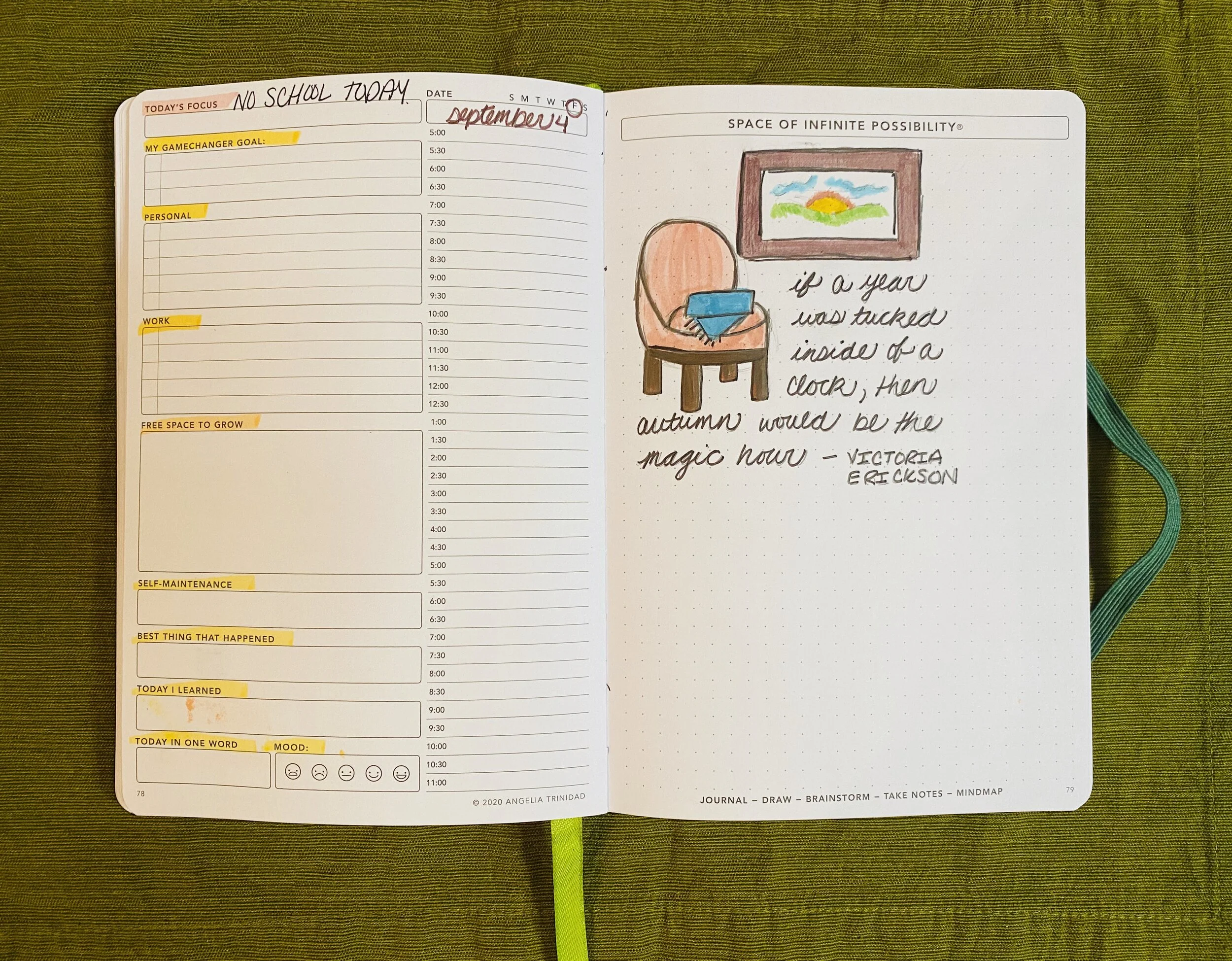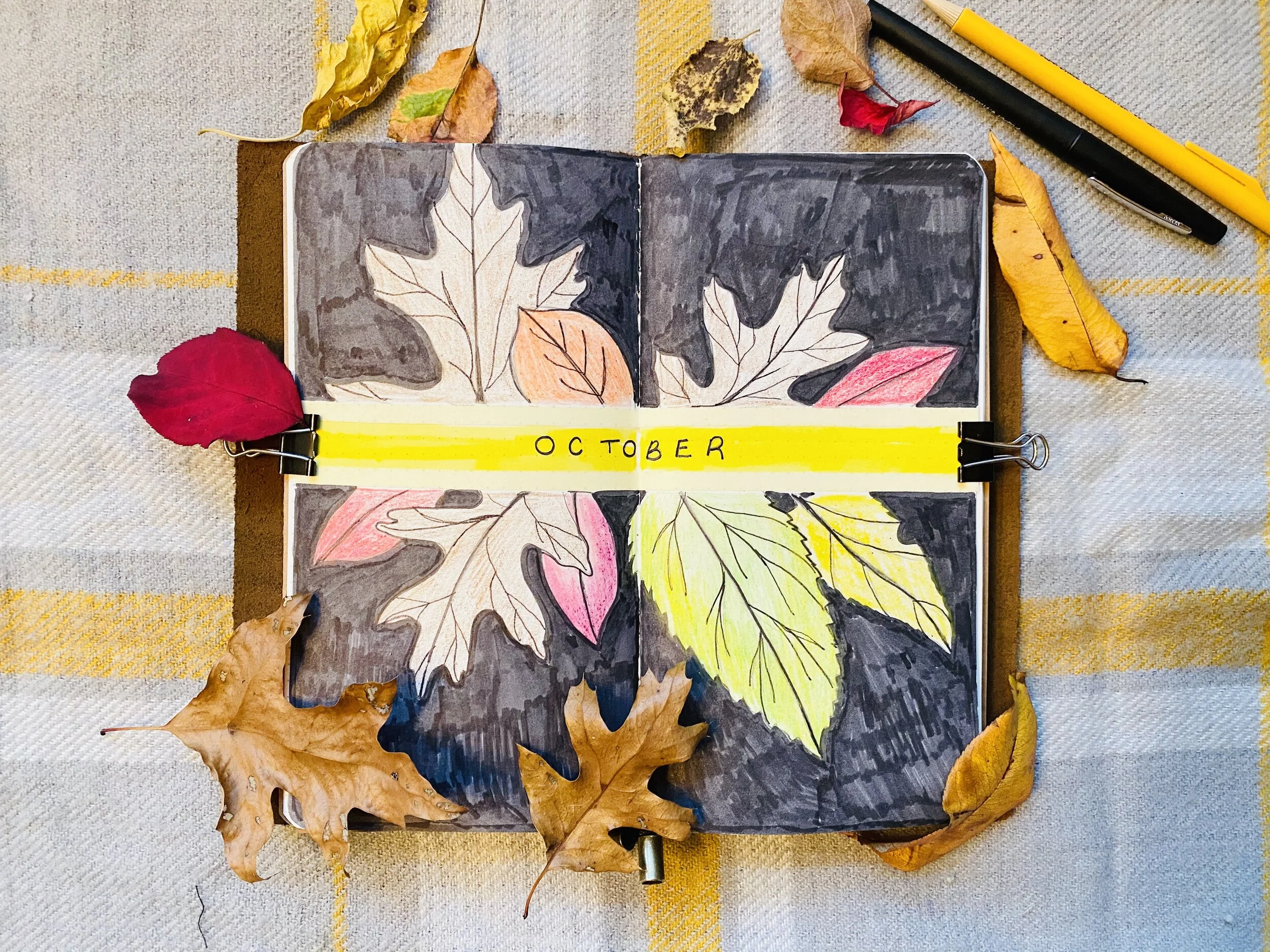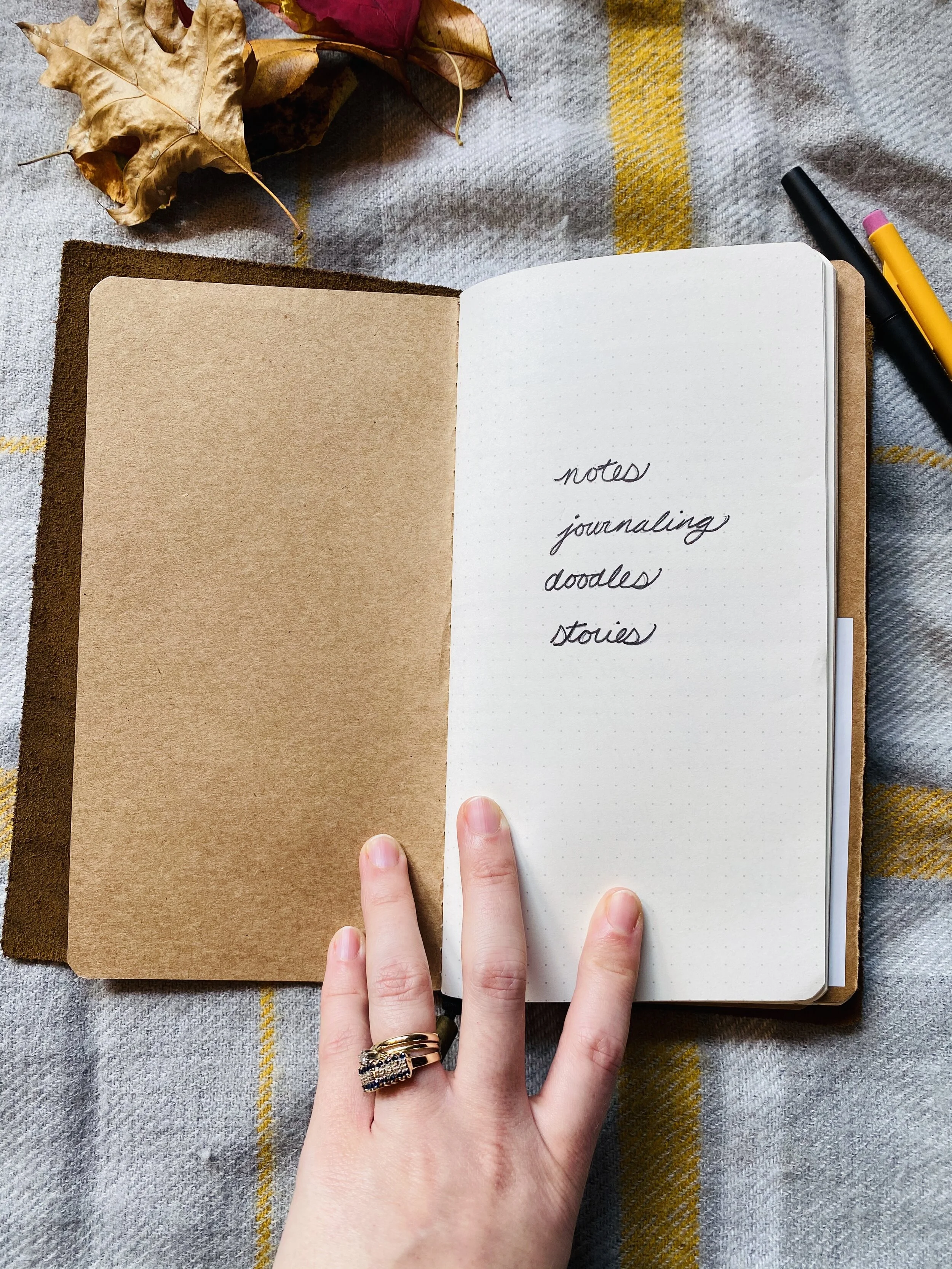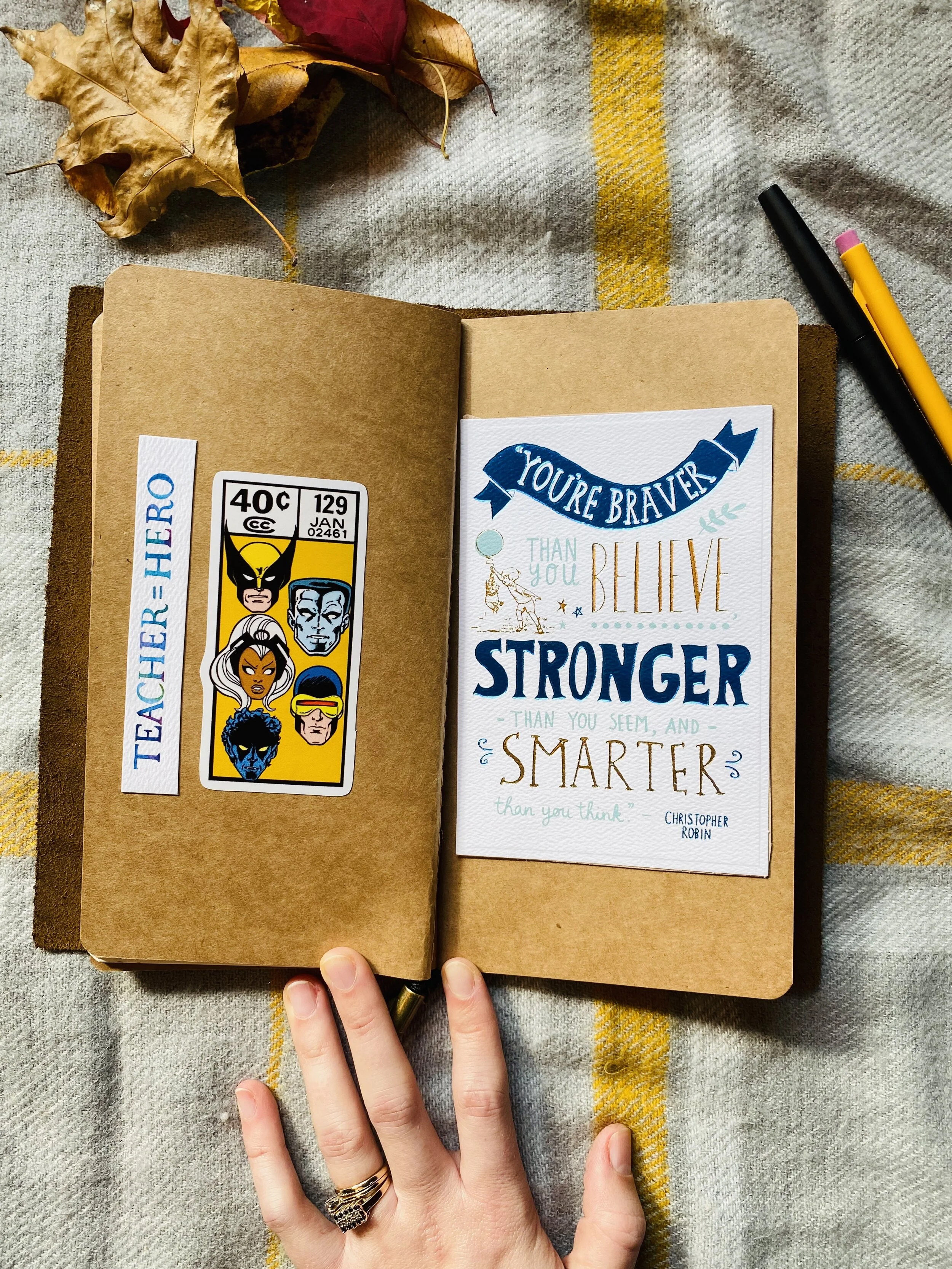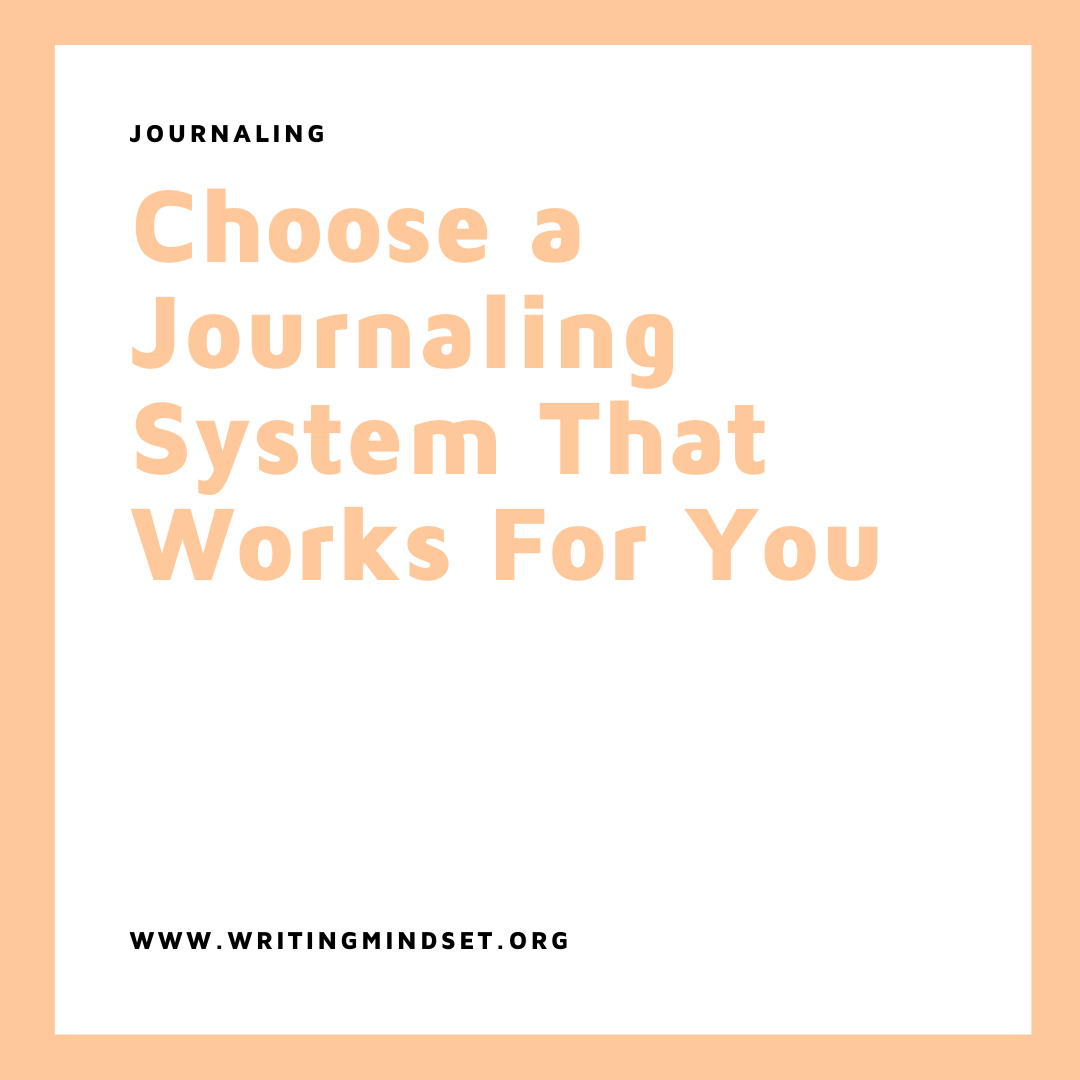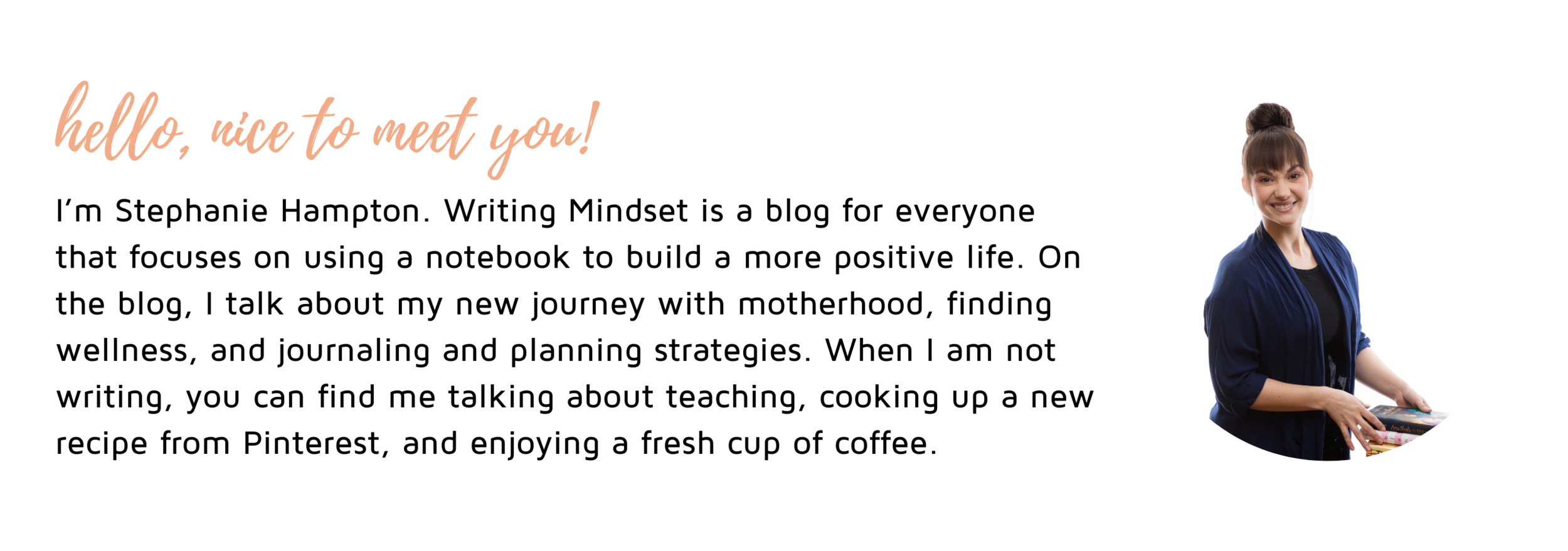Choose a Journaling System That Works For You
Aligning Your Notebook to Your Life
I love all things paper. A new notebook, journal, or planner is enough to get me to feel motivated about my goals. Fresh pages that are blank are sometimes all you need on a rough day to feel like a fresh start is in order. However, maybe like me, you have also had a notebook or office supply obsession get out of hand over the years. While I love a fresh notebook or journal, I will be the first to admit that I am one of the first people to not finish a notebook or journal and move on to something new. I don’t think there is anything wrong with that because of the inspiration that a new notebook brings, but I also know many of us are on the hunt for notebook, planner, or journal peace where we find a system that works for us in all ways.
If you check out examples in the planner and journaling communities, you can see a variety of journal types, writing and typography, designs, layouts and spreads, and ideas for organization. New notebooks make us feel good. Half of the fun in this journaling journey is trying out new ideas and systems to see what will work for us. If you are like me, you know what definitely doesn’t work for you. This post proposes different styles, types, and considerations when trying to find a journal or planner peace. The goal of this post is not to present you with a correct option, but to show you the options that I have encountered along the way so that you find what works best for you.
Start with Purpose
What do you want to accomplish or use your notebook or journal for? There are so many different types of journals, planners, papers, etc. You may just grab a notebook and go. You may love the color or cover of a journal. You may want something made out of leather or something that has a vegan cover option. There is nothing wrong with the method of trial and error, but you may also want to begin with why you want to write. For example, here are some common examples.
Keep a planner to organize your schedule (productivity, organization)
Have a journal on hand to write down your thoughts or ideas (reflection, meditation)
Use a notebook to keep track of a project or learn something new (curiosity, creative writing, education)
The real fun is when you want a journal or notebook to combine multiple purposes in one space. Some people have many notebooks or journals for different purposes, and some people want to carry one single notebook around with them. Purpose also goes hand-in-hand with lifestyle.
Here are 10 questions to consider when narrowing down your purpose, so you can also select a system.
Do you want to keep multiple notebooks or just one?
What size do you want the notebook to be? (Weight, height, portability)
How do you want to keep appointments, tasks, to-do lists, and your schedule?
What are your goals? How do you want to track habits? How often do you want to check-in with goals?
How much space do you need to write every day? Every week? Every month?
What ways do you like to reflect? How much space do you need?
Do you prefer a minimalist design or something more elaborate? Do you like to draw, doodle, and color?
How much time do you have to spend on setting up your notebook or journal?
Do you want something already set up or do you want the freedom to change the setup and layout yourself?
What systems have you tried? What did you like or dislike about those systems or materials? (Make a list)
Dictionary of Journaling Terms from A-Z
You may go through this list of terms and wonder what some of these mean. Feel free to explore the different terms, and as you find a system that works for you, come back to the list to discover new terms you may not have known.
PIN THIS IMAGE TO PINTEREST TO COME BACK TO IT LATER!
A
A4, A5, A6, B4, B5, ETC
Standard paper sizes, A4 is the size of a regular sheet of paper, and A5 is the size of a medium journal
B
BLEEDING
When ink is visible from the other side of a page, see-through paper, also known as ghosting
BRAIN DUMP
A fast "stream of consciousness" type of writing for feelings, tasks, or brainstorming
BUJO
Pronounced "boo-joe," a shortened term for bullet journal
BULLET
A symbol next to a task, event, or appointment, can be a * - or a dot
BULLET JOURNAL
A type of journaling developed by Ryder Carroll, known for layouts and spreads for all areas of life with a focus on tasks, to-dos, and ideas
C
COLLECTION
More than 2 layouts that have the same theme or topic or share a header
CAHIER
A type of small insert journal from the Moleskine company that has a cardboard cover and rounded corners. This type of journal is 8.5 X 5 and fits a wide type of journal.
CALLIGRAPHY
Decorative handwriting or hand lettering
CHALLENGES
Social media challenges or personal challenges on a variety of prompts or topics, often use habit trackers
CHRONODEX
A spiral time tracker for different parts of the day, week, or month
D
DAILIES/DAILY
A layout, spread, or task-list for one individual day
DASHBOARD
The inner cover of a journal used for inspiration or focus
DISC-BOUND
A type of binding for a journal where discs hold the pages together
DOT-GRID
A page printing style where dots make up the pages, great for drawing and writing
DUTCH DOOR
A cut-out style is seen in journals that creates more space within a two-page layout for more information
E
EVENT
An appointment or task
F
FUTURE LOG
A spread or layout that shows the short-term or long-term future with events, tasks, or goals
G
GHOSTING
When ink is visible from the other side of a page, see-through paper, also known as bleeding
GSM (GRAMS PER METRE SQUARED)
Stands for "grams per square meter," measures paperweight, the heavier the paper the higher the quality
H
HOBONICHI
A type of minimal and functional Japanese journal planner made in 2001. The journals have room to write notes, but also come dated like a planner. They most often feature grid or quadrant paper. Also is called Hobonichi Techno or “hobo.”
I
INDEX
A table of contents at the beginning of a journal marks the page name and page number
INSERT
A small blank notebook that comes in a variety of sizes and paper types. Inserts can be stapled or sewn. They are originally meant to hang on an elastic in a traveler’s journal.
J
JUNK JOURNAL
A type of book or journal made up of many different types of papers and materials including stickers, papers, wrapping paper, and scrapbooking materials.
K
KEY
The legend that explains the bullet point system or color-coding used in the journal
L
LETTERING
Modern calligraphy or the types of fonts used in headers or sub-headers
LEUCHTTURM 1917
An international journal and notebook company from Germany, notebooks are popular for bullet journaling
LEVEL 10 LIFE
a layout about goal-setting for 10 different areas of life, from Hal Elrod in his book The Miracle Morning.
M
MOLESKINE
An international journal and notebook company first from Italy, their journals are based on legends using them like Vincent Van Gogh, Ernest Hemingway, and more
MONTHLIES/MONTHLY
A layout, spread, or task-list for one individual month
MORNING PAGES
Stream of consciousness writing done in the morning where a person writes 3 pages non-stop, first developed by Julia Cameron in The Artist's Way
N
NARROW-SIZED NOTEBOOK
A narrow size or standard notebook for a traveler's journal. It is a long journal that measures 8.25 X 4.25
NESTING
Sub-topics under main topics can be marked by different colors for events or tasks
O
ONE-LINE-A-DAY
The practice of writing one thing a day focused on a particular topic, theme, or goal
P
PASSION PLANNER
A personal planner and organizer that focuses on setting and maintaining goals
PIGGY-BACKING
A way to combine inserts together in a single journal cover using elastics. Using this method, multiple inserts can be used in one cover if needed.
R
RAPID LOGGING
The act of quickly writing down tasks, events, or project ideas
RHODIA
An international notebook and journal company from France, known for their orange journals
S
SIGNIFIER
Extra symbols or marks added to bullet points to mark importance or priority with tasks
SKETCHNOTES
Visual note-taking that combines symbols, art, drawings, and color to convey information
SPREAD
1-2 pages in a notebook dedicated to a particular topic, day, or project, see also layout
STAEDTLER FINELINER
A pencil and pen company from Germany, known for their fine-tipped pens for bullet journaling
STM (SCRIBBLES THAT MATTER)
An international journal and notebook company from the UK, known for its modern and creative journal covers
STREAM OF CONSCIOUSNESS
Uncensored and fast-paced writing used to get thoughts, ideas, or feelings down quickly
T
TASK
An item on a to-do list or project
THEME
Styles, colors, or images that combine collections together, examples: sunflowers, bees, books/reading
THREADING
A way of connecting old collections together across different notebooks, first developed by Ryder Carrol of the Bullet Journal
TIME LADDER
An hour-by-hour layout often used in dailies to show schedules or appointments
TOMBOW DUAL BRUSH PENS
An international pen and art supply company based in Japan, known for brush pens for lettering in journals
TRACKER
Layouts or spreads used to track goals or behaviors, also known as habit trackers
TRAVELER’S NOTEBOOK
A journaling system that uses a single journal cover to keep multiple refillable journal inserts on elastic bands. It originally was used to document travel.
TRAVELER’S COMPANY
Previously known as the Midori Traveler’s Notebook (MTN), a company that makes narrow-size notebooks that house inserts on a single elastic strand. They are the creators of the original traveler’s notebook.
W
WASHI TAPE
Decorative thin-style tape, first originated in Japan
WEEKLIES/WEEKLY
A layout, spread, or task-list for one individual week, can take up 1-2 pages
Example Systems I Like
There are tons of systems and materials to choose from in the world of journaling and planning. You can spend some time on Pinterest or Instagram to see example notebooks, layouts, and get ideas for what you want in a notebook system. Remember, the system is often linked to your goals, time, and purpose.
The three systems I love the most are bullet journaling, using a Passion Planner, and currently, I am trying out a traveler’s notebook. I like each system for many different reasons, and ultimately, I am using the traveler’s notebook because it combines different purposes into one. However, I think there is also a time in life where you need other systems. Let me go through each system and a few of the pros and cons.
From left to right: My traveler’s notebook from Chic Sparrow, my Passion Planner, and my most recent Leuchtturm 1917 bullet journal
Links to items in the above photo:
RETIRED Chic Sparrow Narrow Size Oak Pemberley Classic Traveler’s Notebook
Lush Green Undated Daily Passion Planner
Medium A5 Dotted Bellini Special Edition Leuchtturm 1917 Journal with Pen Loop
Bullet Journaling (One journal that keeps everything within a single bound system)
PROS
Function. Everything is in one spot and in one notebook. I feel like I am carrying around a representative of my thoughts and life. Ryder Carroll (founder of Bullet Journal) designed a rapid-logging system to help with keeping track of tasks.
Creativity. I like to make my own layouts and spreads. I rediscovered a love for drawing because of bullet journaling.
Portability. One notebook is easy to carry around. I can toss it in a bag and go.
CONS
Time. It can take up a lot of time to make spreads, layouts, and designs. I can see how people may feel pressured to make fancy designs with color, but even minimal designs take time.
Organization. While most notebooks have two bookmarks, I would still have to flip through to find information with ease. I know the table of contents is a feature in most notebooks, but I would often bypass this because it was tedious to go back and forth with logging.
Example Bullet Journal layout-meal planner
Example Bullet Journal layout-monthly spread
Passion Planner/Predetermined Layout Planner (Planner dated or undated with lines or space to write already set on the paper/traditional planners)
PROS
Time. Any planner makes this easier by having the layouts already made, but Passion Planner layouts are just great. They give you room to write and space to make tasks.
Guidance. The Passion Planner literally helps guide you to reach goals. I always feel the most productive and organized when I am using a planner like this.
Accountability. The Passion Planner also holds you accountable for self-care. With having boxes like self-maintenance and moods, I often found myself not filling these in on a daily basis. When I did, I felt better and was aware of the stress going on in my schedule.
CONS
Creativity. Many people post their Passion Planners and planners in general with designs and doodles. But, I often would get discouraged if I didn’t use a page or a layout. It looked blank, and I just had to move on to the next day or week.
Flexibility. If I want to change the layout, I can’t. I really like daily spreads, but sometimes I need a weekly overview and I can’t see everything I need to see at once.
Writing Room. If I go with a planner that already has layouts, I always run out of room to journal or write. Then I use other pages and things go out of order. The other option would be to carry two journals with me-one for organization and one for writing.
Example Passion Planner layout-daily layout
Traveler’s Notebook (One journal cover with multiple inserts held on elastics)
PROS
Inserts. Inserts allow me to switch out notebooks often and as much as I like.
Creativity. I can make my own layouts and spreads like in bullet journaling. I can continue to draw and doodle. Now, I can also decorate covers with pictures, greeting cards, and stickers.
Organization. I like that each insert can be a different part of life. I currently have 4 inserts: journaling, scheduling/tasks, blogging, and family. I can also change out the inserts as I like. For example, my scheduling insert will get changed once a month. My blogging insert will not need to get changed until the end of each quarter.
CONS
Frequency. While it is nice to switch out inserts, there is also something nostalgic about flipping through an old journal to see where you have been. The size of the inserts makes this difficult because I can go through them so quickly. They are now making larger traveler’s notebook journal sizes, but I don’t know how I will like them on the elastics.
Time. It can take time to set up and create the layouts. While the freedom is nice, I didn’t have to worry about setting anything up with the Passion Planner.
Example Traveler’s Notebook layout-monthly cover page
Example Traveler’s Notebook layout-weekly spread
Example Traveler’s Notebook-insert setup
Example Traveler’s Notebook-insert cover decoration
While there are other systems and solutions to consider, after reading my list, what things did you have in common with me? What things do you need on a daily and weekly basis? I am finding that if I am feeling stuck or overwhelmed, I need a system like the Passion Planner. However, when I am not stuck, I prefer the freedom of a bullet journal or a traveler’s notebook.
Consider Materials
One of the best parts of journal shopping is looking for a journal you love. Considering all of the materials available, here are some things to consider when choosing your journal.
Cover design and color (I think journals should be inspirational)
Journal cover materials-Do you prefer leather? Vegan options? Consider the makeup of your actual journal cover.
Paper weight or gsm (see dictionary) Leuchtturm 1917 journals have a weight of 80 gsm. Cardstock goes up to 450 gsm. The reason why people love heavier paper is to prevent ghosting or bleeding when drawing, painting, or writing with a fountain pen. I really like the 100 gsm inserts I am using from Wanderings right now. They write better than my Leuchtturm 1917 journals.
Paper style. I am in love with dot-grid paper. I love being able to draw, write, and create my own layouts with just a little bit of guidance. Some people love lines, grid or quadrant paper, or blank pages.
Company goals and values. Do the company’s values align with your values? I think this is important to consider when looking for a journal. Many times a journal is something that stays with us for a long period of time.





